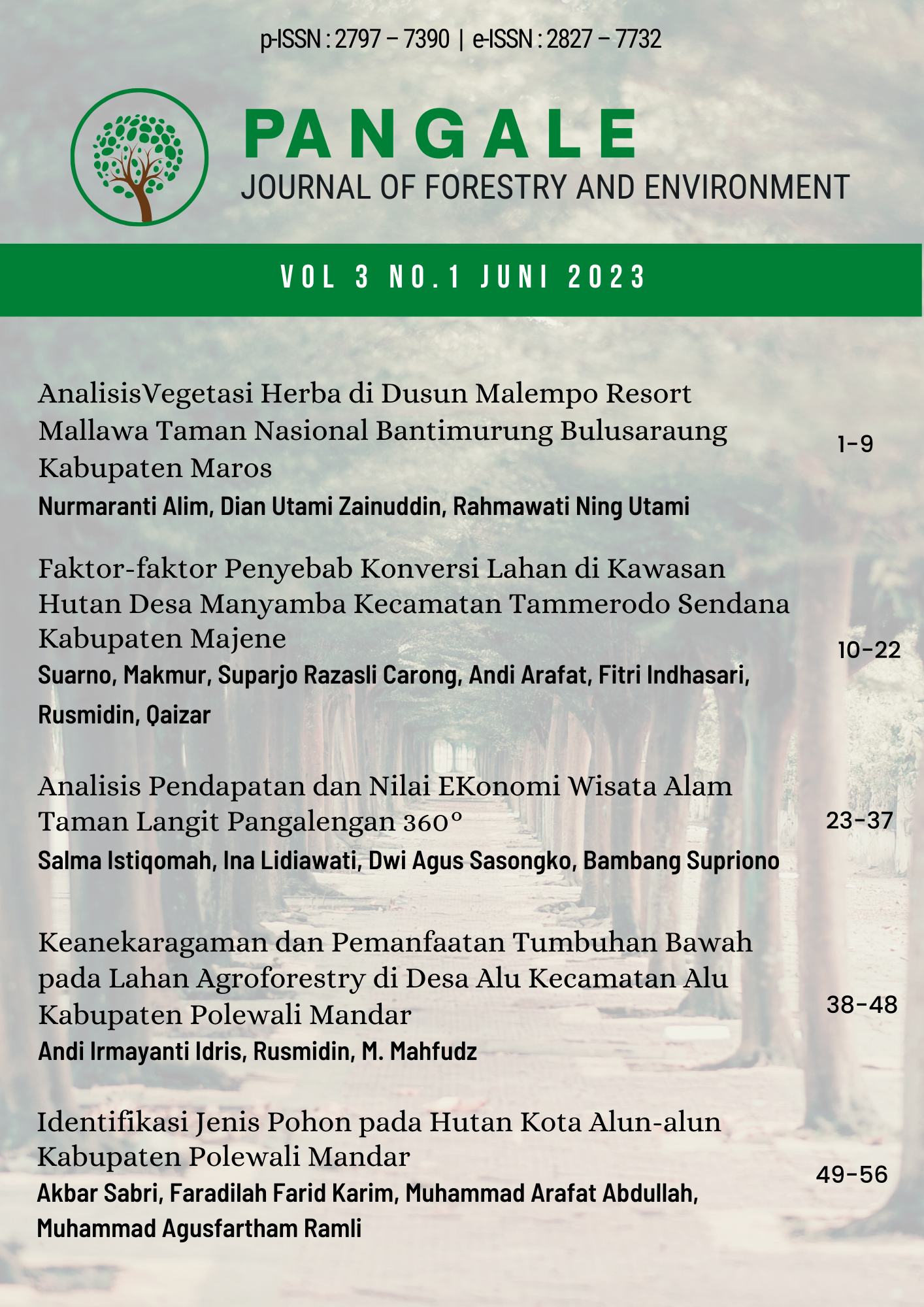Main Article Content
Abstract
Conversion of forest land is one of the phenomena of changing forest land into agricultural land. This research was carried out in Manyamba Village, Tammerodo Sendana District, Majene Regency, from September to November 2020. The aim of this research was to knowing the factors causing forest land conversion and to find out the socio-economic impact of forest land conversion on the income of farmers in Manyamba Village, Tammerodo Sendana District Majene Regency. The benefit of conducting this research is as information material and input for the government and farmers in Manyamba Village, Tamerodo Sendana District. Determination of the population and sample in this study was carried out using the snowball method. The types and sources of data are primary data and secondary data. The results of the study showed that the main factors behind the respondents conversion of forest land were daily needs and the number of dependents of family members which tended to be large, thereby increasing the household income of farmers as well. The socio-economic impact the conversion of forest areas carried out by the people of Manyamba Village, namely changes in livelihoods that were originally produces from durian and rattan but after conversion of forest land can generate new income from fields of paddy, cloves, corn, lemongrass and bananas. Changes in post-conversion land-owning farmer household income, there are two categories, namely (1) the income of land-owning farmers who have increased and succeeded in meeting the daily needs of their families. (2) changes in household income after forest area conversion.

